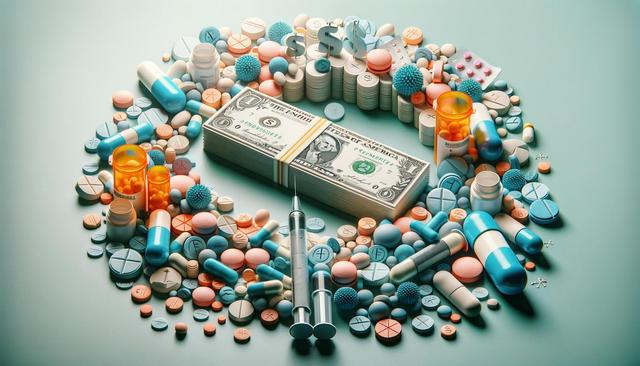Why Medication Prices Vary So Much
The cost of anxiety and depression medication can differ widely depending on several factors. These include whether the drug is generic or brand-name, the dosage required, the pharmacy you choose, and whether you have insurance coverage. Generic medications are typically more affordable and provide similar effects as their brand-name counterparts. However, not all medications have a generic version available, especially newer treatments.
Some of the main reasons for price differences include:
- Development and marketing costs of brand-name drugs
- Patent protections that prevent generics from being made
- Supply chain and distribution costs
- Pharmacy pricing and location
It’s also important to note that medication prices can change over time, especially when patents expire or when new competitors enter the market. Patients may want to ask their healthcare provider or pharmacist about switching to a more affordable option if cost becomes a barrier.
Insurance and Out-of-Pocket Costs
Health insurance plays a significant role in how much individuals pay for their anxiety and depression medications. If you have insurance, your plan may cover a portion of the medication cost, lowering your out-of-pocket expense. However, the exact amount depends on your plan’s formulary, which is the list of drugs covered by your insurance. Some medications may be categorized in higher tiers, requiring higher copayments.
Key points to consider include:
- Copay tiers and whether the medication falls under a preferred category
- Annual deductibles and whether they’ve been met
- Availability of mail-order options that may reduce long-term costs
- Prior authorization requirements that can delay access
Understanding your insurance plan’s policies can help you make informed decisions. If a medication isn’t covered, you can ask your provider about similar alternatives that are more affordable under your plan.
Assistance Programs and Discount Options
For those without insurance or facing high out-of-pocket costs, several assistance programs exist to help manage the expense. These include manufacturer savings programs, non-profit organization support, and pharmacy discount cards. Some government programs may also offer help, especially for low-income individuals or those with disabilities.
Common forms of assistance include:
- Patient assistance programs offered by pharmaceutical companies
- Prescription discount cards available through pharmacies or online
- State-sponsored mental health programs
- Community health clinics that provide medications at reduced prices
Exploring these options can significantly lower the financial burden. Speaking with a social worker or case manager at a medical facility can also guide you to the right resources.
Talking to Your Doctor About Cost Concerns
Open communication with your healthcare provider is crucial when it comes to managing the cost of anxiety and depression medication. Doctors can often recommend alternatives that are more affordable or equally effective with a generic version. They may also provide samples to help you determine if a medication works for you before committing to a full prescription.
When discussing costs with your doctor, consider asking:
- Is there a generic version available?
- Can the dosage or frequency be adjusted to reduce cost?
- Are there combination medications that can treat multiple symptoms?
- Would switching to a different medication make financial sense?
Being upfront about your budget can help your doctor tailor your treatment plan. Many providers understand the financial challenges and are willing to work with patients to find suitable options.
Long-Term Considerations and Budgeting for Medication
Managing anxiety and depression is often a long-term process, which means budgeting for medication over months or even years. Planning ahead can help reduce stress around costs and ensure consistent treatment. One strategy is to set aside monthly funds specifically for medication, especially if you’re paying out of pocket or have a high-deductible insurance plan.
Other budgeting tips include:
- Using pharmacy apps to track price changes and find the best local deals
- Refilling prescriptions in 90-day supplies when possible, which can be cheaper
- Comparing prices at different pharmacies or using online services
- Reviewing your insurance annually to ensure you’re on the most cost-effective plan
Consistency in treatment is key to managing symptoms effectively, so finding ways to make medications more affordable is essential. With some planning and support, it’s possible to maintain a treatment plan that fits both your health and financial needs.
Conclusion: Managing Mental Health and Medication Costs
For individuals dealing with anxiety and depression, the cost of medication can be a significant concern. However, understanding what factors affect pricing, how insurance works, and what assistance programs are available can make a big difference. Open conversations with healthcare providers and proactive cost planning offer pathways to affordable and effective treatment. By taking a strategic approach, you can prioritize both your mental health and your financial well-being.


